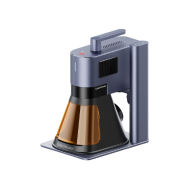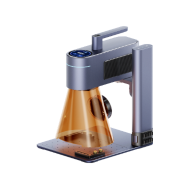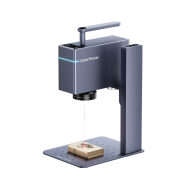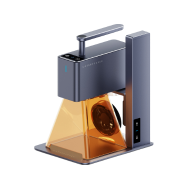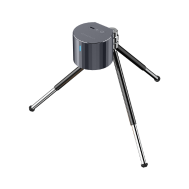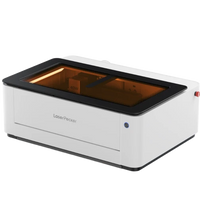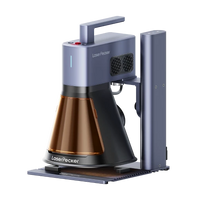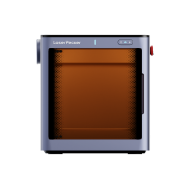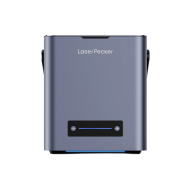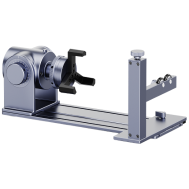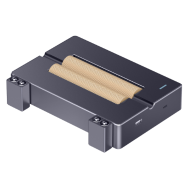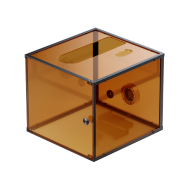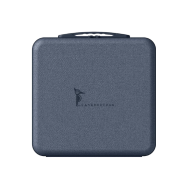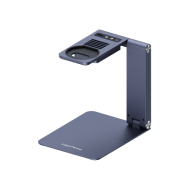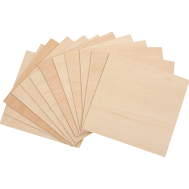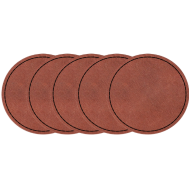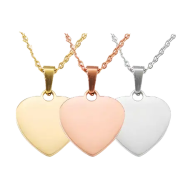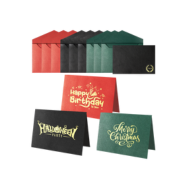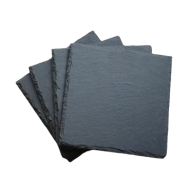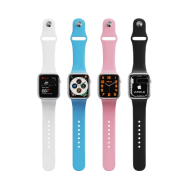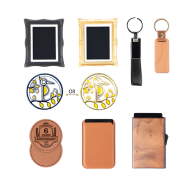Have you ever seen a stainless steel tag shimmering with blue, gold, or purple tones—and wondered how those colors were engraved without paint? That's the magic of color laser engraving. Unlike traditional laser engraving, which only creates black or grayscale marks, color engraving uses precise heat control to bring out vivid hues on certain metals.
In this beginner's guide, we'll walk you through everything you need to know—from how it works and what materials to use, to the best laser machines for the job and inspiring project ideas. Whether you're new to laser engraving or looking to expand your skills, this guide is your starting point for exploring vibrant, color-filled possibilities.

In this article:
Part 1: What Is Color Laser Engraving?
Color laser engraving is a technique that allows you to add vibrant, permanent colors to the surface of certain metals using a laser engraver. Unlike traditional engraving that simply etches the material to create a contrast, color engraving alters the material's surface structure to reflect different wavelengths of light—resulting in visible colors without using any ink or paint.

1.1 How Does Color Laser Engraving Work?
Color laser engraving works by precisely heating the surface of the material with a high-powered laser, usually a fiber laser. The heat changes the way light reflects off the surface by creating oxide layers or modifying the surface texture. Depending on the laser's power, speed, frequency, and line spacing, this process can produce different colors, especially on metals like stainless steel or titanium.
It's a fine-tuned and delicate process that requires precise control over engraving parameters. Even small adjustments can result in completely different shades or finishes. That's why modern laser software with fine parameter control is key to achieving beautiful and consistent color results.
1.2 Best Lasers and Laser Engravers for Color Engraving
Not all lasers are capable of color engraving. The most suitable type is the fiber laser. diode lasers can also achieve color engraving, but it requires precise control of laser power, depth. And CO₂ laser generally can't achieve color engraving because it lack the necessary control or interaction with metal surfaces. So, if you're serious about engraving in color, investing in a quality fiber laser or diode laser is essential.
With numerous fiber and diode laser engraver available, some people may wonder What laser is best for engraving metal with color or What machine engraves colors on metal best?
If you're looking to do color laser engraving at home or on a small scale, LaserPecker LP5 or LP4 is a great choice. Both models feature a dual-laser system—combining a diode laser and a fiber laser—giving you the flexibility to work with a variety of materials, including stainless steel and titanium. Plus, LaserPecker engravers are portable, user-friendly, and cost-effective, making them ideal for personal or small business use.
Part 2: Which Materials Are Suitable for Color Laser Engraving?
Color laser engraving requires materials that can react to heat in a way that creates visible color changes—typically through oxidation or structural shifts on the surface. Not all materials are suitable, and the best results are usually achieved with certain metals.
Best Materials for Color Laser Engraving
1. Stainless Steel
Stainless steel is one of the most popular materials for color engraving. When treated with a fiber laser, its surface forms oxide layers that display a wide range of vibrant colors—from blue and purple to gold and green. It offers excellent color consistency and durability, making it ideal for art, branding, and custom gifts.
2. Titanium
Titanium reacts strongly to laser heat and can produce an impressive spectrum of colors. It's widely used in aerospace, jewelry, and high-end custom goods. Like stainless steel, the colors come from oxide layers formed at different heat levels.
Materials That Don't Work
Aluminum: Tends to reflect light and doesn't produce strong color effects. It's better suited for deep or black engraving.
Copper and Brass: These metals conduct heat very well but are poor candidates for color engraving.
In summary, color laser engraving is best done on metals that can form a stable oxide layer, with stainless steel and titanium being the top choices. For vibrant and lasting results, always use a fiber laser—especially one with MOPA technology—to precisely control the engraving parameters.
🔨 Case Study: Color Laser Engraving on Stainless Steel (5 Steps)
Items Required:
- Engraving Material: Stainless Steel Sheet
- Engraving Machine: Fiber Laser Engraver (LP5 or LP4)
- Smart Engraving Software: LDS Software or App
Can you do color laser engraving? Definitely yes! Follow these 5 simple steps to get your personalized crafts with colors.
Step 1: Choose the Right Stainless Steel for Color Engraving
Selecting high-quality stainless steel is key to achieving bright and consistent colors. Use sheets with a smooth, clean, and polished surface for best results. Avoid heavily textured or coated surfaces, as they may interfere with the laser's ability to produce clear color gradients.
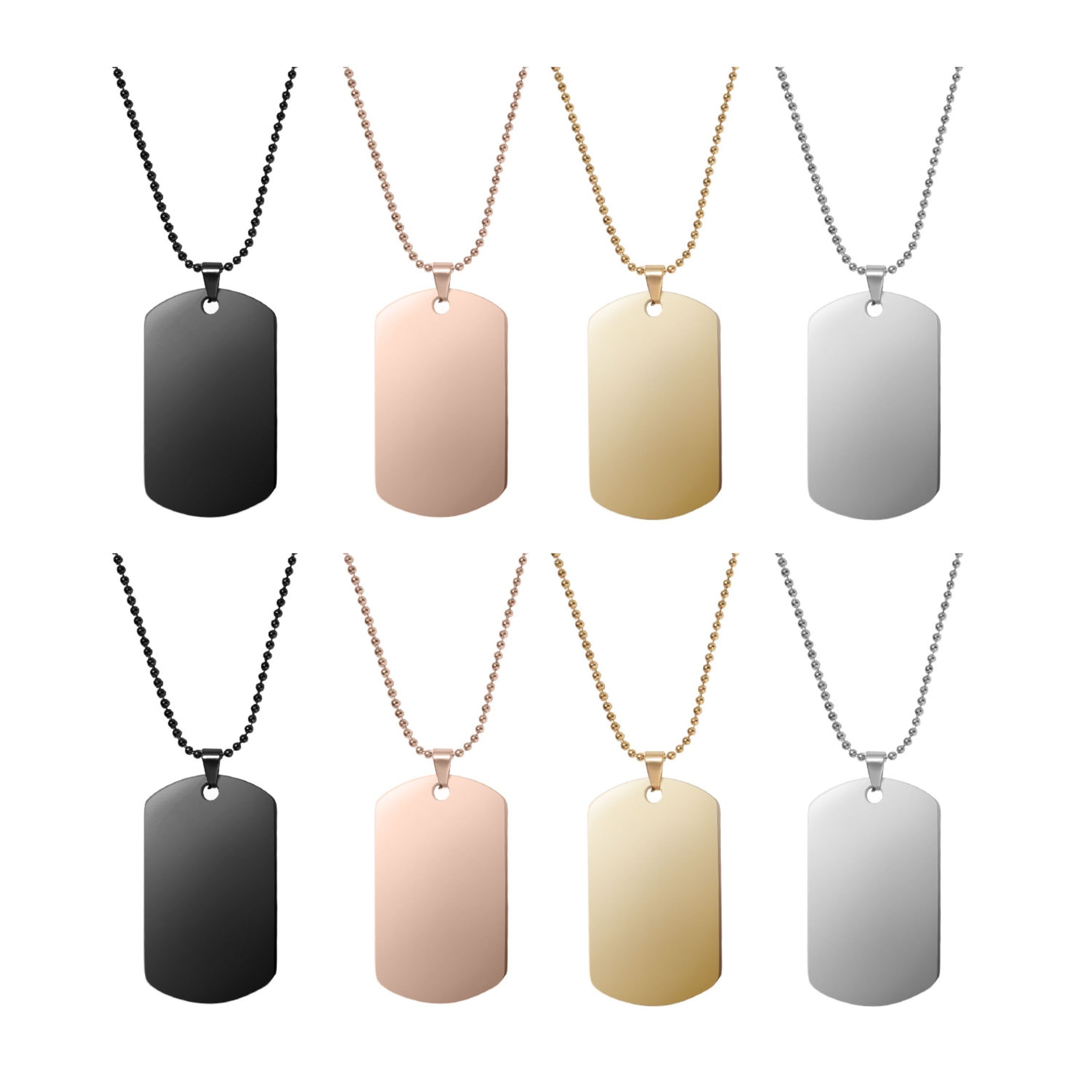
Step 2: Choose the Color Engraving Machine
Here, we choose LaserPecker LP5, which is a dual-laser and multi-functional laser engraver that excels in color engraving.
Step 3: Run a Test Engraving to Get a Color Array on the Stainless Steel Sheet
The Material Test Array is a powerful feature in the LDS software and app. It lets you preview how different color results will appear on your stainless steel sheet before starting the final engraving.
Here's an example of a tested result using the LP5. To fine-tune the color outcome or personalize your settings, check out our guide on how to create a Material Test Array for color engraving.
LP5 Test Results


LP5-1064nm Laser Type - 8K Resolution Test Results
LP5-1064nm Laser Type - 4K Resolution Test Results


LP5-450nm Laser Type - 8K Resolution Test Results
LP5-450nm Laser Type - 4K Resolution Test Results
Step 4: Set up the Color Laser Engraving Machine
Once you've got your color array, it's time to adjust the engraving parameters for your color engraving project.
Firstly
To achieve color engraving, different areas of the image require different engraving parameters. If the image consists of a single layer, it won't be possible to apply distinct parameters to each area. Before importing the image, it needs to be pre-processed by separating the different colored areas into separate layers, then saving it as an SVG file before importing it into the LDS software.
Secondly
Import the image into the software, then ungroup the image. By opening the layers panel, you will see that the image has been split into five layers.


Thirdly
Switch to the Engraving layer panel. Based on the recorded color-to-parameter mapping, click on the corresponding layer to adjust the processing type, laser type, resolution, Frequency, power, and depth parameters.


Finally
After setting the parameters for all layers, group the layers, adjust the image size, and center the image.

Step 5: Start Your Color Laser Engraving Now
Place the engraving material on the cutting plate, preview the engraving, and then start the engraving process. Below is the result of the engraving.

Color Engraving Tips:
- For best results, use silver-colored stainless steel or titanium for color engraving. Different materials like mirror, brushed texture stainless steel will produce different effects.
- The change of colors is determined by many variables, including air humidity, temperature, the attenuation level of the Laser Unit, and the Laser Unit's focal length. Make sure your work surface and Laser Unit are level. This helps prevent uneven color distribution.
- Use the LDS App for color engraving, as the PC version currently does not support setting parameters for individual layers.
- Clean the stainless steel surface before engraving. Avoid oil, fingerprints, or dust — any contamination can seriously affect the oxide layer formation.
- Try experimenting with different focal distances and resolutions. Using different laser frequencies when selecting the 1064nm laser type, and adjusting the test array parameters to get more vibrant color blocks.
Conclusion
Color laser engraving may sound advanced, but with the right tools and knowledge, it's absolutely beginner-friendly. By understanding how colors form through laser interactions with metal, and choosing the right machine—like a fiber laser—you can unlock a whole new level of creative potential.
Ready to experiment with bold color effects on stainless steel or titanium? With the tips and steps in this guide, you're fully equipped to begin your color engraving journey with confidence.
















